Johnny Guitar (1954)
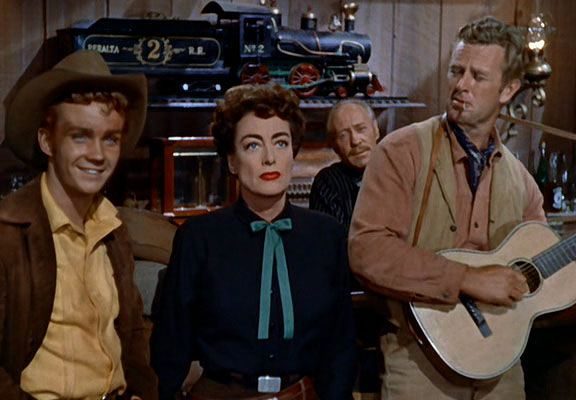
Toronto Film Society presented Johnny Guitar (1954) on Sunday, March 5, 2023 as part of the Season 75 Sunday Afternoon Film Buffs Series, Programme 6.
Production Company: Republic Pictures, Producer: Herbert J Yates, Director: Nicholas Ray, Screenplay: Philip Yorden, Ben Maddow, Based on the novel Johnny Guitar by Roy Chanslor, Cinematography: Harry Stradling, Music: Peggy Lee, Victor Young, Film Editor: Richard L. Van Enger.
Cast: Joan Crawford (Vienna), Sterling Hayden (Johnny ‘Guitar’ Logan), Mercedes McCambridge (Emma Small), Scott Brady (Dancin’ Kid), Ward Bond (John McIvers), Ben Cooper (Turkey Ralston), Ernest Borgnine (Bart Lonergan), John Carradine (Old Tom).
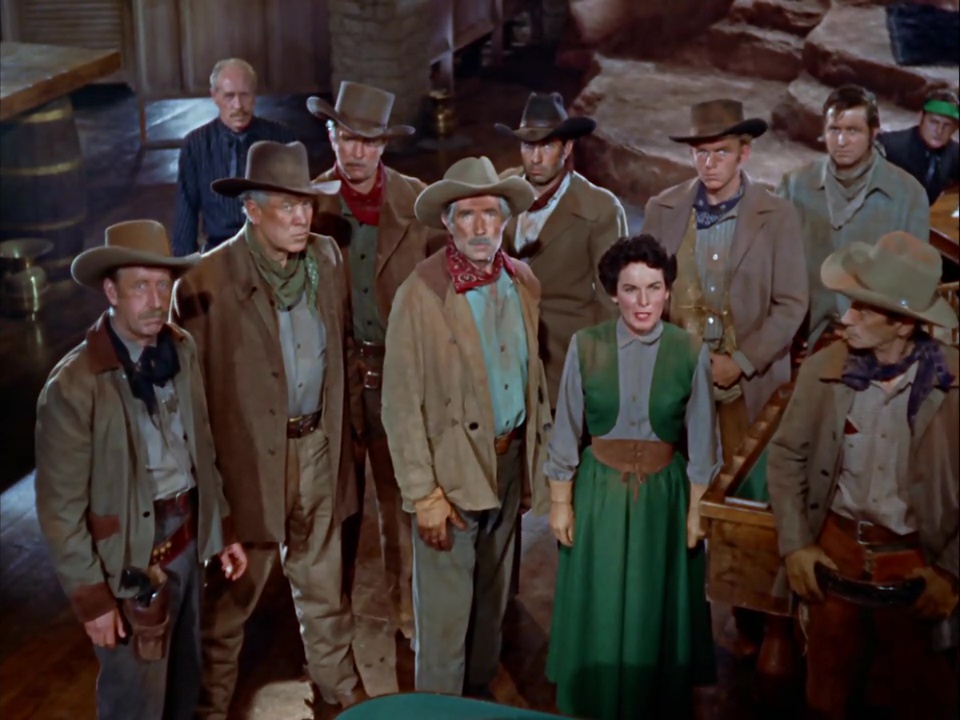
Johnny Guitar is a 1954 western film made during a time when westerns were extremely popular in Hollywood, but it was unlike any other western of its time. It features Joan Crawford as a strong, independent female lead and remains unique for the genre, exploring themes of gender roles, power dynamics, and political corruption.
The film tells the story of a former gunslinger named Johnny Guitar (Sterling Hayden) who comes to a small town to help his former lover Vienna (Crawford) run her saloon.
Vienna is accused of supporting a group of local bandits, which leads to tensions with the townspeople, led by Emma (Mercedes McCambridge), who want to see her shut down and ultimately hanged. As the situation escalates, Johnny must choose between his loyalty to Vienna and his desire for a peaceful life.
One of the most interesting aspects of the making of Johnny Guitar is the role of Joan Crawford, who was a Hollywood legend by the time the film was made. Crawford was known for playing strong, independent women, and her role in Johnny Guitar was no exception. However, she also had a reputation for being difficult to work with, and her clashes with director Nicholas Ray were well-documented. Despite this, Ray later admitted that Crawford was the reason the film was made in the first place. According to Ray, Crawford was the one who read the script and saw the potential for a powerful, feminist story. She convinced him to direct the film and used her star power to secure funding.
Crawford’s portrayal of Vienna was groundbreaking for its time. In a genre dominated by male heroes and female victims, Vienna was a fully realized character with agency and power. She ran her own business, made her own decisions, and refused to be bullied by the men around her. Her relationship with Johnny Guitar was also unconventional for a western. Rather than playing the typical damsel in distress, Vienna’s character clearly holds the power in their relationship.
The film’s exploration of gender roles and power dynamics was also ahead of its time. Vienna’s struggle to maintain her power in the face of male aggression and corruption was a reflection of the larger societal issues facing women in the 1950s. The film also challenged traditional ideas of masculinity, with Johnny Guitar rejecting violence and seeking a peaceful life.
Although somewhat ambiguous and open to interpretation, modern critics have noted subtle cues and gestures that hint at a possible attraction or intimacy between Vienna and Emma, interpreting their interactions as indicative of a deeper emotional connection.
The film’s portrayal of Vienna as a powerful and independent woman, who runs her own saloon and is fiercely protective of her business, has also been seen as a nod to lesbianism or queer identity. In an era when homosexuality was still largely taboo and stigmatized, the film’s depiction of a strong, self-reliant woman who defies traditional gender roles may have been seen as a subversive statement.
The theme of McCarthyism is prevalent throughout the film as well. Released during the height of the Red Scare, it explores many of the same themes and anxieties of the time. In particular, the film is interested in the ways in which fear and suspicion can be used to manipulate and control people. This is embodied in the character of Emma Small, who is determined to drive Vienna out of town on the basis of nothing more than rumor and innuendo. Through Emma, the film shows how easily a society can be swayed by fear and distrust, and how dangerous this can be when left unchecked.
Director Nicholas Ray brought his unique artistic vision to the film, infusing the proceedings with a heightened sense of melodrama and using striking visual elements to create a sense of tension and unease. The film’s stylized lighting and bold color palette, unusual for a Western at the time, included vivid hues of red, blue, and yellow, and helped to create a sense of heightened emotion and drama.
This was partly due to the fact that the film was shot in Trucolor, a much less expensive alternative to the more widely used Technicolor process at the time. The use of colour also serves a symbolic purpose, subtly enhancing character traits. Look closely and notice how Crawford’s character is often dressed in fiery red, while her rival Emma Small (played by Mercedes McCambridge) is associated with icy blue.
Contemporary critics were divided over the film’s portrayal of gender roles, with some applauding the strong female characters and others dismissing them. Many critics also took issue with the film’s use of colour, with some finding it too garish and distracting. Overall, however, most critics agreed that Johnny Guitar was a bold and ambitious work that pushed the boundaries of what a Western could be.
Audiences, on the other hand, were less impressed. The film was only a middling success at the box office, possibly due to its unconventional style and themes.
Despite its initial reception, however, the film has since gone on to become a cult classic, influencing many filmmakers including Quentin Tarantino, Martin Scorsese and David Lynch, and it remains a thematically rich, groundbreaking work and a classic of the Western genre.
Notes by Michael Powell
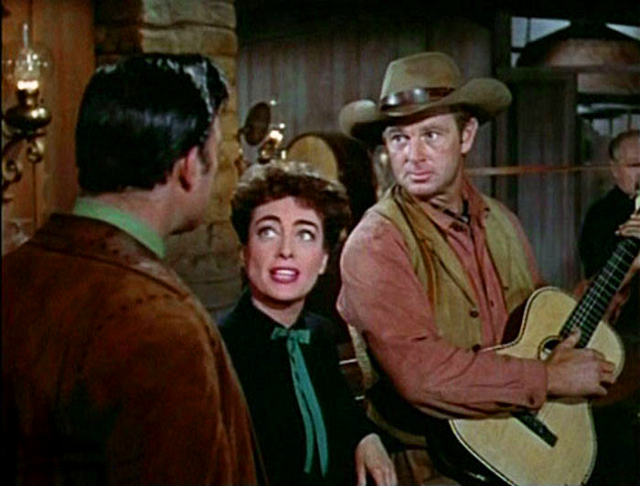
Spot the Canadian by Leslie Smith
Edward G. Boyle, set decorator on Johnny Guitar (1954), was born January 30th, 1899 in Cobden, Ontario, a small town situated at the foot of Lake Muskoka. As a youth, he enlisted in the Princess Pat’s Canadian Light Infantry, seeing service in WWI and rising to the rank of lieutenant.
Post-war, he headed to Hollywood to pursue a career in the arts. Work came slowly at first, but it must have been aided somewhat by his 1922 marriage to San Franciscan author Mary Eunice McCarthy. She, too, had moved to Los Angeles, following the footsteps of her two screenwriter brothers.
The couple made a living, living on the periphery of the biz. But it wasn’t until the mid-1930s that they began to really break out. Among the dozen films McCarthy scripted, her best-known today are Theodora Goes Wild (1936) and Sister Kenny (1946). As for Boyle, he ended up working on over 100 films, was nominated for Academy Awards seven times and won once.
His credits encompass assists on post-Civil War sets for Gone with the Wind (1939), creating the Nazi-like paraphernalia for The Great Dictator (1940), and recreating the rough boxing milieu in both Body and Soul (1947) and Champion (1949). Other major pics include The Son of Monte Cristo (1940), Separate Tables (1958), The Children’s Hour (1961), Seven Days in May (1964), Hawaii (1966), The Thomas Crown Affair (1968) and Gaily Gaily (1969).
Boyle was a favourite of Billy Wilder, who used him for Some Like it Hot (1959), The Fortune Cookie (1966), and 1960’s The Apartment, for which Boyle finally won the Oscar.
He retired in 1970 and died in Hollywood on February 17th, 1977 at the age of 78.

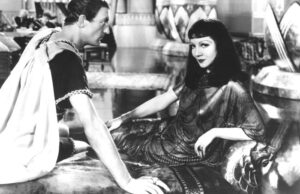
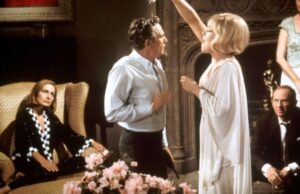
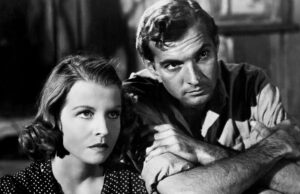






Leave a Reply